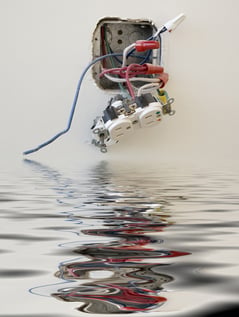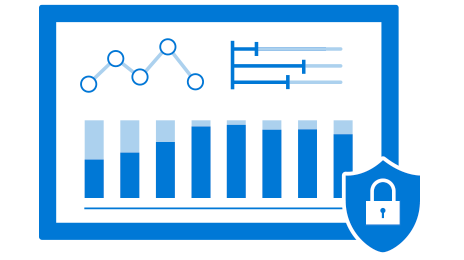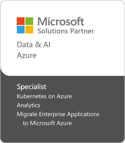Microsoft Azure offers Opportunity to Simplify & Reduce Cost of Disaster Recovery (DR)
Disaster Recovery (DR), is often an understated aspect for a business. The cost for an unrecoverable outage may well be your entire business. Planning, implementation, and testing of a traditional disaster recovery solution is a complex and expensive process, though cheaper than the cost of doing nothing. Fortunately, with cloud enhancements and Microsoft Azure there are more cost-effective options that are worth considering.

If I told you that in 2020 more than 50% of companies, have either no no disaster recovery plan or had an insufficient one would you believe me? A disaster can occur at any time, and have multiple sources; hardware failure, cyber-attacks (ransomware), human error, natural disasters, and employee malfeasance just to name a few. The statistics are not on your side: an estimated 25 percent of businesses do not reopen following a major disaster.
The Cost of Disaster Recovery
Planning, implementation, and testing of a traditional DR plan can be a daunting task. Hardware costs can more than double. There are overhead costs to ensure that DR procedures are followed. In a large enterprise system you’ll likely need to document the individual parts and how they are used so they can be integrated into your DR plan. Database servers, web servers, application servers, firewalls, email servers, and switches would need to be replicated, ideally with identical hardware. Even with virtual servers you’ll need secondary hardware in another location. Less ideally, hardware is obtained to support a reduced state until the production hardware issues can be rectified. For transactional data, additional systems would need to be put in place to replicate data to the failover servers so that that the failover environment is kept in sync. Archival data may also be committed to a secured facility as well, often in the form of tape backups; in the case of something like “ransomware”, the only viable data may be on a detached archive device, like a tape.Moreover, DR solutions are often not adequately tested or sometimes not tested at all. Documentation of DR solutions may be lacking and tend to fall out of date as systems and personnel change. If you can’t enact the DR plan, then effectively you don’t have a DR plan. Revisiting your plan at least yearly is important. The viability of any DR solution requires that any changes be well documented and updated as required.
The cost of not having a DR plan is an evolving concept. Traditionally the major costs have been primarily lost revenue during downtime, lawsuits, decreased customer trust, and industry sanctions and censorship. More recently government regulations have entered into the mix for some industries and can include massive fines, and potential incarceration. In more modern systems that might take advantage of historical data for data science and machine learning to support AI ventures could end up with invalidated results.
Azure Disaster Recovery Service (DRaaS)
If you don’t already have a strong DR process or are retooling an existing DR process consider instead Disaster Recovery as a Service (DRaaS). An example of DRaaS is Azure Site Recovery. Azure Site Recovery simplifies both implementation and testing failover scenarios, all without having to purchase additional hardware, and less need to staff up IT to support an organization failover location. Interestingly, many of the costs involved with azure site recovery are not charged until the computing power is needed to support a failover mode.
In today’s fast paced world customers expect a high degree of up time without excuses. The barrier to entry from moving from a traditional DR to DRaaS solutions lowers the barrier to entry while offering some best in class solutions for disaster recovery. An Azure DRaaS solution will still take effort and some investment, but the overall costs, maintenance and speed of implementation are significantly reduced.










